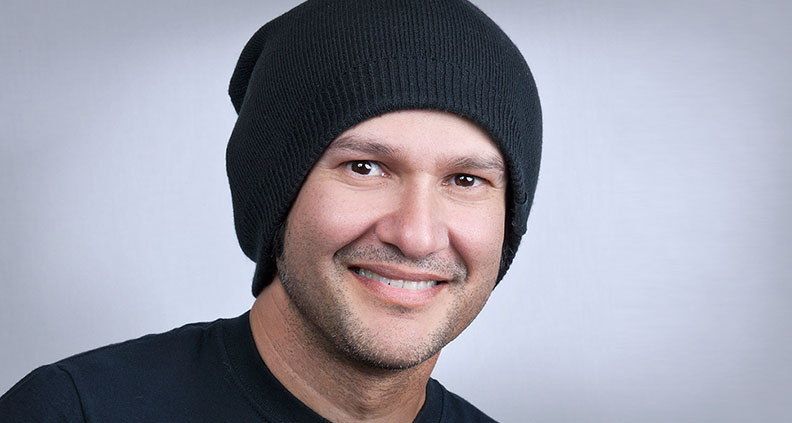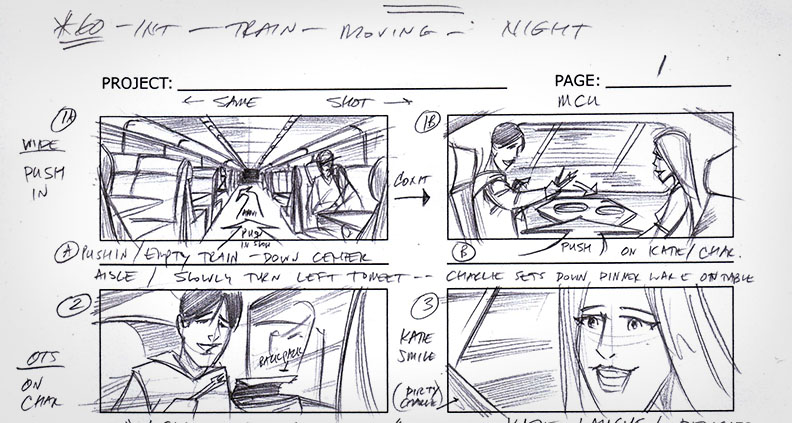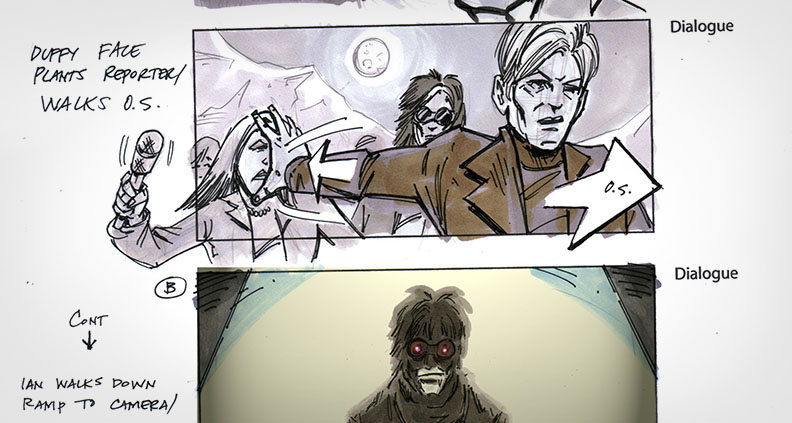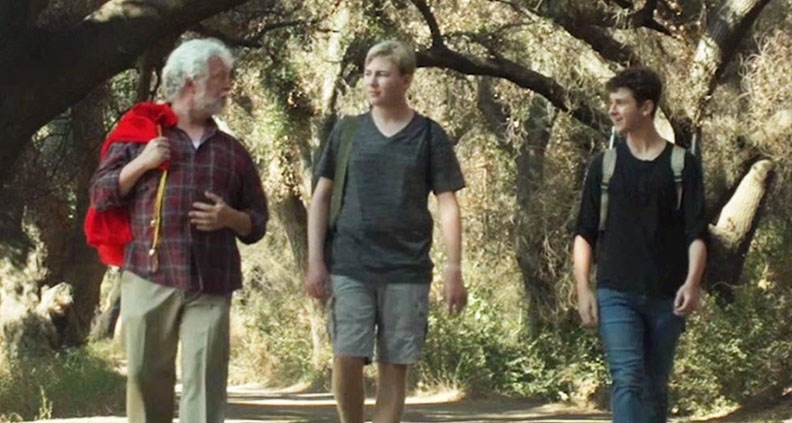ICYMI: Storyboard Artist Neil D’Monte on Comics, Creativity and Thinking Visually
NOTE: the following interview originally ran in January of this year. We’re re-posting it here with a special thanks to Mr. D’Monte.
***
Film, you may have heard, is a visual medium. Which means that, more often than not, a script’s first stop on its way to the big screen to the drafting table of a professional storyboard artist—who in collaboration with the director is tasked with translating a writer’s words into a menu compelling images to be replicated on set. For larger special effects-driven films, storyboarding and pre-visualization are an absolute must. But make no mistake: storyboarding can help streamline, clarify and inspire indie filmmakers just as significantly as it does their big budget counterparts.
As one of Hollywood’s top storyboard artists, Neil D’Monte has created panels for films ranging from Jurassic World to Palm Springs, counting among his credits Batman vs. Superman, Rambo: Last Blood and Den of Thieves. Not too shabby for the Chicago native, who originally sought to pursue a career drawing comic books before his early forays into storyboard and concept art caught the eye of Lucasfilm, who hired D’Monte to help out on a little film called Star Wars: Episode I – The Phantom Menace.
We recently spoke to D’Monte about his artistic inspirations and the process of creative collaboration, as well as his recent transition to director, helming episodes of episodic TV as well as the short films The Ex and Jingle Trails. Here’s the conversation:
NEIL D’MONTE

Tell us a little bit about growing up in Chicago. What were some of your earliest artistic influences on the illustration side?
D’Monte: Chicago is pretty fun. We had a very close-knit community of pretty much every nationality. So I got to experience so many cultures by living there. When I was a little kid the first thing that really influenced me, honestly, was the cartoon Battle of the Planets with the [cartoon space adventurers] G-Force. I slowly moved into comic books. I got into Spider-Man and a lot of Marvel and DC Comics. I really liked Batman and The Flash. I was influenced by artists like Gene Colan, John Byrne—who’s a very big influence on me—and Michael Golden, who did a lot of Marvel books like X-Men. Comic books have influenced my camera angles and art styles to where they are now. Those are the biggest influences as to where my style kind of came from.
When did storyboard design come into the picture? When did you become aware that this was a part of the filmmaking process and how did you decide to pursue it?
D’Monte: The reason why I came out to California was I wanted to be a comic book artist. I graduated school and got off the railroad; I didn’t know what to do, I was trying to get comic book jobs but nobody was hiring—and no one really liked what I was doing. At that point my friend Nick Wagner, who was a set PA, told me about storyboarding. He said, “You can make a lot of money doing storyboards basically like doing comic books, but you do really quick sketches. Every time you watch a movie or TV show, a lot of times things are storyboarded so every shot that you see is like a comic book.” I asked him if people really get paid for doing stuff like that and he goes, “Yeah!” I got a book called Shot by Shot, referred to me by my friend Michael Keller. I immediately went to that section about Alfred Hitchcock’s North by Northwest and I swear, within maybe 10 minutes I knew how to do it.

So from there, how did you grow that into a long-term career?
D’Monte: Vampires Anonymous was the first movie I actually did storyboards for. That’s the movie where I really learned how to do the process; little by little, I kept learning all these different tricks. Once that movie came out people just keep referring me for jobs, so I never had to get an agent. Then, eventually, after years and years all those same people that you that you grow up with in the film business, they keep referring you. You’re getting bigger budgets, and the next thing you know I was working on bigger films like Jurassic World. So that’s how the whole process kind of happened.
Speaking of process, at what point are you brought into the production and what’s your collaboration with filmmakers like? To what extent are directors telling you exactly what they want and to what extend are you given free reign to interpret a script as you see fit?
D’Monte: So, for Steve Miner [Day of the Dead] for example, at first I asked what the budget was. Then I asked: Who are the influences you want me to look at? Are there any movies or directors or certain things that you like? Please give me a list of that. Then it’s almost kind of like getting into their head. Literally, I’d say 98% of the directors I’ve worked with have told me that The Big Lebowski is their favorite movie—it’s on everyone’s list. They tell me certain shots from things they like, and then I go watch the scenes they’re talking about. More experienced directors actually will just say, “Go for it and I’ll get back to you.” They let you go and do your thing. Other times they like to meet with you in person, which I personally love. You use that [meeting] to get everything out in, like, in little doodles and then you go back home and add detail on them so the director know exactly what they’re getting.

I know that you’ve begun directing films as well. I want to talk about that transition. Was that something that you always wanted to do?
D’Monte: When I was a kid I wanted to get into directing, because I used to make Star Wars movies with my Super 8 camera and my Star Wars figures and everything. A couple years ago a friend of mine who had a smaller film company asked me if I want to direct a $1,000,000 film for her company because I storyboarded so many big movies, working with big directors. My friend Jim Harmon, who’s a DP that I worked with—also a director—saw rough cuts of my work and said, “You have do this and do that, fix this and fix that, cover this, don’t cover that.” I felt stupid, but he said: “You’re a storyboard person, so basically you have to realize that whatever you draw, you’ve got to have someone leaving the camera on the scene. You have to show [characters] actually entering on the next scene. Otherwise it will look like someone teleporting into the shot.” I was learning through him. One thing I also learned is that when you’re directing something to just turn the sound off. If you can see what’s going on and be able to tell a story without having any sound, you’re doing a good job.

To learn more, follow Neil D’Monte on Twitter. D’Monte’s short films The Ex and Jingle Trails are available to watch on Amazon Prime.
Film Independent promotes unique independent voices by helping filmmakers create and advance new work. To become a Member of Film Independent, just click here. To support us with a donation, click here.
NOTE: this blog originally ran in January of this year.
More Film Independent…
(Header: Storyboard for Palm Springs)